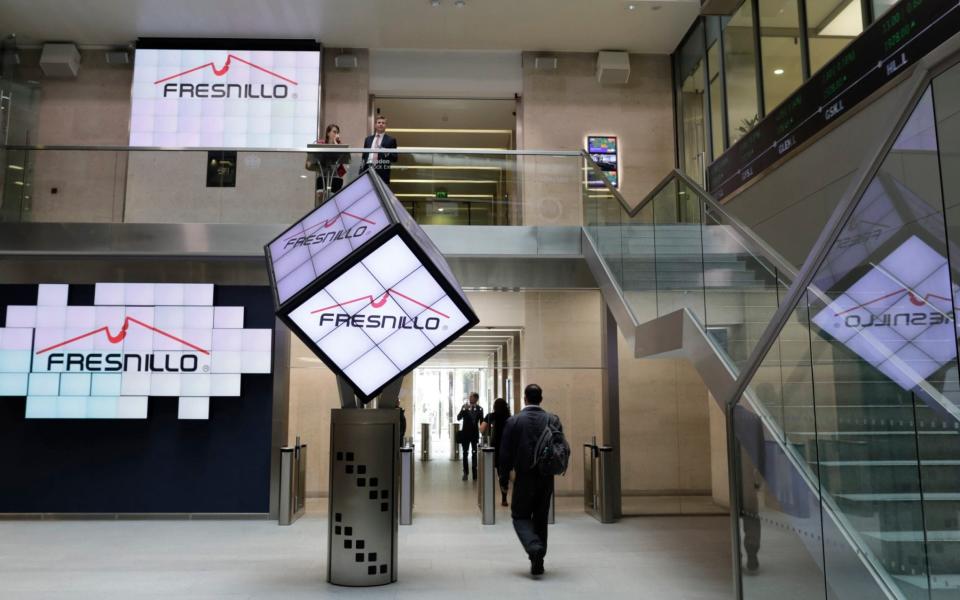Forget gold, silver is rising faster and will continue its run

The gold price hit a record high this week but the price of its “sibling” commodity silver has outpaced it and experts expect it to continue closing the gap.
The silver price has jumped 55pc since April with its total gains for the year at 33pc. An ounce of silver now costs $23.50. The gold price has risen 12.5pc over three months and is up 35pc for the year, costing $1,925 an ounce.
Investors have taken note. Silver sales at the Royal Mint, where investors can buy the physical metal directly and store it digitally, grew 600pc between March and July compared with the same period in 2019. On July 21, silver sales broke their historic one day record.
Yet despite this run of good form, there is space for the silver price to rise – a tantalising prospect for investors. The ratio of the gold to silver price, which is calculated by dividing the gold price by the silver price, gives an indication of how silver might behave in the future.
It is currently 82, meaning silver is 82 times cheaper than gold. It's long-run average since 1990 is 68, meaning the silver price is higher or closer to that of gold. In 2011 when gold hit its previous record price, it was a substantially more expensive 32.
This means silver has space to make gains versus its more precious counterpart. Analysts suggest that silver would have to more than double to get back to its high of April 2011.
Investors see the huge leap in the silver price as entirely justified. Silver, like gold, acts as a safe haven asset and store of value when governments around the world are freely printing money.
Recent monetary loosening, the swelling of central bank balance sheets, and increased government spending to tackle coronavirus have tipped investors over the edge in their distrust of fiat currencies – especially the US dollar, argued Ned Naylor-Leyland, of investment firm Jupiter.
On top of that, yields on government bonds have become so low that silver and gold, which offer no yields, have become relatively more attractive, according to Duncan MacInnes, of investment manager Ruffer.
Raising interest rates could reverse the rise of precious metals but central banks have indicated that they are unwilling to even consider this.
Mr Naylor-Leyland said: “Unless rates go up, silver keeps rising. It will be volatile in both directions, but should go higher."
During rising markets for both metals, silver often ascends faster than gold. “It is a smaller and more speculative market. It tends to react with a lag to the gold price and then move in a more dynamic way,” Mr MacInnes explained.
Industrial demand
Silver’s price is 80pc correlated with gold but it is also moves on the back of industrial demand. The gold price is more dictated by investors.
It is highly electroconductive and is used in electronic components, such as for 5G telecoms networks and medical applications, which are growing in importance and could drive prices higher.
Nitesh Shah of Wisdom Tree, an investment manager, said: "As 50pc of silver’s use is in industrial applications an increase in manufacturing demand leads to a meaningful increase in the price." Mr Shah expects the silver price to rise 30pc in the next 12 months versus a gold price increase of 18pc.
Others are less confident. American bank JP Morgan has turned neutral on the outlook for gold and silver and said the latter's sharp rise in value versus gold will fade in the next month, with the ratio settling around 85.
Investors can add exposure to the metal through silver miners, such as London-listed Fresnillo, which is the world’s largest. Operating costs are usually much lower to extract silver than gold, so rising silver prices are especially profitable for mining companies.
Another option is to buy an exchange traded fund. This is a portfolio listed on the stock market which tracks the price of silver, normally charging a modest fee.
There are also coins or bars made for investment purposes, which can be purchased through exchanges such as the Royal Mint. However, unlike gold, silver is not exempt from VAT and investors must pay the standard 20pc fee.
Investing via BullionVault avoids this extra charge because their silver is stored in a London Bullion Market Association-approved vault which is exempt of the tax.
